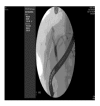Spectrum of biliary complications following live donor liver transplantation
- PMID: 26207167
- PMCID: PMC4506943
- DOI: 10.4254/wjh.v7.i14.1856
Spectrum of biliary complications following live donor liver transplantation
Abstract
Liver transplantation is the optimal treatment for many patients with advanced liver disease, including decompensated cirrhosis, hepatocellular carcinoma and acute liver failure. Organ shortage is the main determinant of death on the waiting list and hence living donor liver transplantation (LDLT) assumes importance. Biliary complications are the most common post operative morbidity after LDLT and occur due to anatomical and technical reasons. They include biliary leaks, strictures and cast formation and occur in the recipient as well as the donor. The types of biliary complications after LDLT along with their etiology, presenting features, diagnosis and endoscopic and surgical management are discussed.
Keywords: Bile leak; Biliary stricture; Liver transplantation.
Figures






References
-
- Raia S, Nery JR, Mies S. Liver transplantation from live donors. Lancet. 1989;2:497. - PubMed
-
- Pichlmayr R, Ringe B, Gubernatis G, Hauss J, Bunzendahl H. [Transplantation of a donor liver to 2 recipients (splitting transplantation)--a new method in the further development of segmental liver transplantation] Langenbecks Arch Chir. 1988;373:127–130. - PubMed
-
- Alonso EM, Piper JB, Echols G, Thistlethwaite JR, Whitington PF. Allograft rejection in pediatric recipients of living related liver transplants. Hepatology. 1996;23:40–43. - PubMed
-
- Doyle MB, Maynard E, Lin Y, Vachharajani N, Shenoy S, Anderson C, Earl M, Lowell JA, Chapman WC. Outcomes with split liver transplantation are equivalent to those with whole organ transplantation. J Am Coll Surg. 2013;217:102–112; discussion 113-114. - PubMed
Publication types
LinkOut - more resources
Full Text Sources
Other Literature Sources
Miscellaneous

